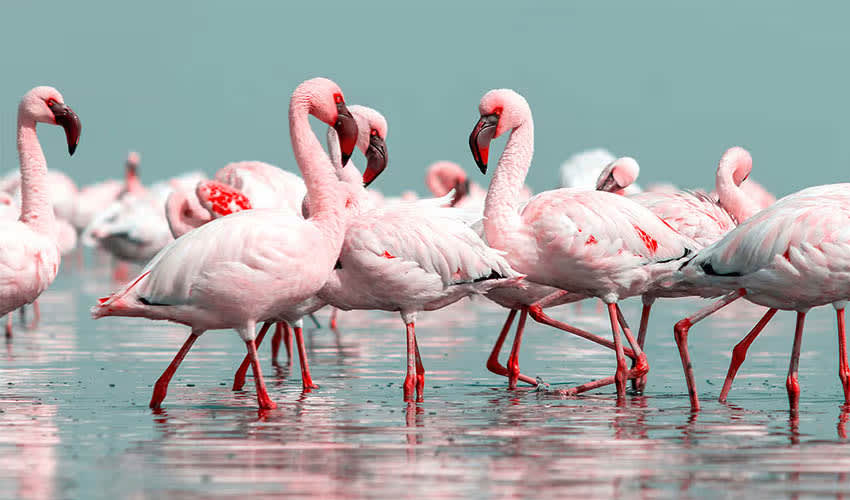Phoenicopterus – Greater Flamingos
These birds derive their beautiful pinkish color from the food they eat
Greater flamingos are some of the most instantly recognizable birds due to their striking pink plumage and unique feeding habits. These majestic birds are known for their long legs and necks, which allow them to wade into deeper waters than most other birds can reach. The pink coloration of their feathers, which ranges from a pale and subtle hue to a vibrant tone, directly results from their diet, which is rich in carotenoid pigments found in their primary food sources, such as brine shrimp and blue-green algae. These pigments are metabolized and deposited in the feathers, skin, and beak, intensifying as they age. Flamingo chicks are born with greyish down and only acquire their pink coloring as they mature and feed on carotenoid-rich foods.
Flamingos have specially adapted beaks and tongues that allow them to filter feed. Their beaks are bent, which is unusual among birds, and are equipped with a filtering structure that helps them remove water and mud, leaving behind small organisms like invertebrates and algae. This highly efficient feeding mechanism enables flamingos to spend long periods feeding while standing in the shallow waters of estuaries, mudflats, and saltwater lakes, which are their preferred habitats worldwide.
Greater Flamingos are social birds living in large colonies that can number thousands. These colonies offer protection against predators and are beneficial during breeding seasons when flamingos perform synchronized courtship displays. Such displays involve a variety of behaviors, including head-flagging, wing salutes, and marching, all of which strengthen social bonds and facilitate mate selection.
Nesting in these colonies is a communal effort. Flamingos build their nests out of mud, and both parents are involved in incubating the single egg they lay. The nests are conical mud structures that help protect the egg from the surrounding water. Once hatched, flamingo chicks join large groups called crèches, guarded by a few adults, allowing both parents to forage to sustain the high-energy demands of milk production.
Species in this genus
American flamingo
Famous for its habit of standing on one leg
Greater flamingo
The iconic and elegant bird with a curved pink bill is known for turning heads



